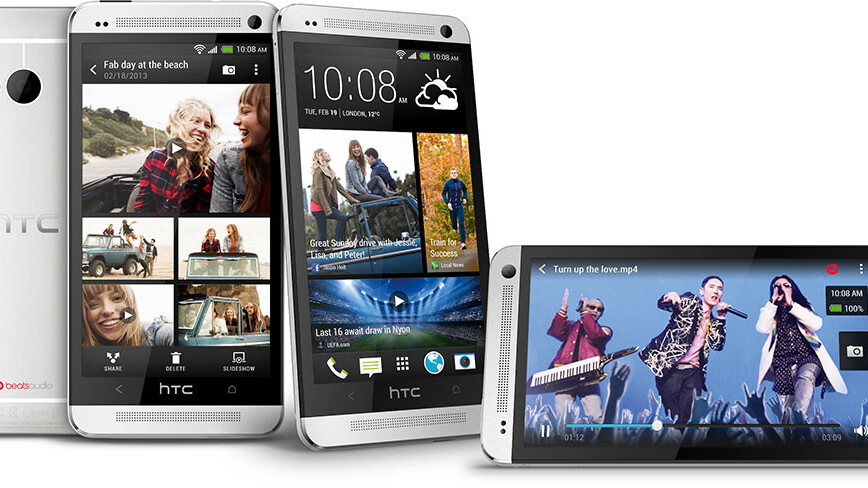
To say HTC has had it hard over the past year would be an understatement. Despite the introduction of the HTC One range — led by the HTC One X — last year, the Taiwanese smartphone maker went on to post its lowest quarter of profit in 8 years during its last quarter.
HTC predicts its first quarter to worsen still (by as much as 17 percent), but hopes that the release of its new smartphone will put a stop to its shrinking revenues, giving it a real chance of competing against Apple and Samsung — two companies that account for 52 percent of worldwide smartphone sales between them.
For weeks, rumors have been circulating that HTC has been working to release the latest model in its One range. Codenamed “M7”, the handset appeared in numerous renders before recent reports suggested that the Taiwanese company would call it the ‘HTC One’.
Today, those rumors have been confirmed. HTC has unveiled its latest weapon in the smartphone war, demonstrating its increased focus on build quality, optics and seamless services.
The HTC One isn’t just the company’s new flagship, it has gone back to basics to ensure that its device doesn’t just look good, but has the hardware specifications, software and services to back it up.
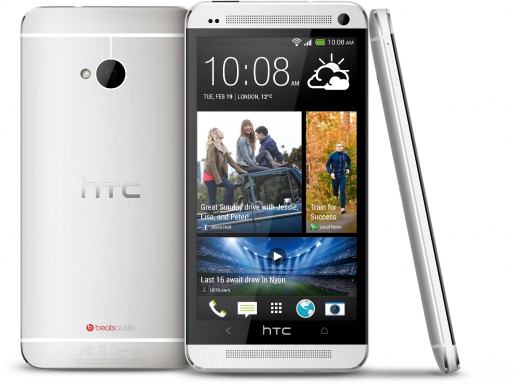
Hardware and Design
The HTC One is a beast of a phone. It features a 4.7-inch 1920 x 1080 (full 1080p HD) display offering a whopping 468 pixels-per-inch (PPI), a 1.7GHz quad-core Qualcomm APQ8064 Snapdragon processor, 2GB RAM, 32GB (64GB coming soon) of internal storage (no MicroSD support but it comes complete with 25GB Dropbox storage), a 4-megapixel rear-facing camera, a 2.1 front-facing snapper and a 2300mAh battery.
The handset will also run Android 4.1.2, and will be LTE and 802.11ac-enabled.
Unusually, HTC has incorporated an an infrared sensor. This turns the One into a remote control supporting all major TVs and meaning that you can use it instead of having to grab your regular remote. Let’s face it – you probably often have your phone in your hand while watching TV anyway.
Developing the One, HTC has opted for an all metal unibody chassis that measures 9mm at its thickest point. Not only does it feel sturdy in the hand, the company says it has been able to use 12 years of R&D to incorporate all its antennae into the metal, using a complex system of patented technologies to automatically utilise antennae not obscured by your hand when you use it. NFC, UMTS and LTE — they’re all incorporated into the metal body.
Opting for Gorilla Glass, HTC says it has polished the edges on the front, making sure that the screen wraps around, ensuring that it’s almost seamless in its construction. Tightly integrating — or “pyramid stacking” — hardware into the spine of the phone, the company has been able to slightly curve the back around those components, maintaining the curved reverse that impressed so much with the HTC 8X.
While the screen is the same size at the HTC One X (and its siblings), it is almost 10 percent smaller across all angles than the older models.
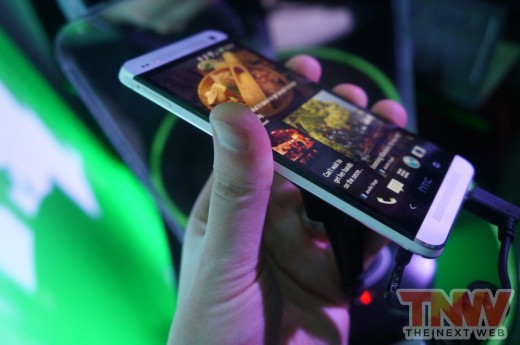
Camera
Running through the specifications, you’ll be impressed by most of the hardware HTC has managed to pack inside the device. You may also have noticed what appears, at first glance, to be a woefully underpowered camera.
This isn’t the case, and HTC wants you (by way of us) to know exactly what it has achieved in the optics department.
The HTC One X had a strong camera focus; it was one of the first Android devices to fully feature burst mode photo capture and an easy toggle to capture images while you were shooting video. Many Android OEMs followed up with their own versions of the feature, but HTC — shown by its marketing — was proud of what it had achieved with its dedicated imaging chip.
The HTC One continues this tradition, but if you felt HTC’s imaging was pretty good before, the company is now operating on a completely different level.
HTC says that for the HTC One, it has rethought the platform from the ground up. Thinking about the way people take photos and what they want from a smartphone camera, it wanted to first address the common misconception that the more megapixels your smartphone has, the more capable it is.
Addressing what it calls ‘the megapixel myth,’ HTC doesn’t want megapixels to be what defines its camera experience. While more pixels isn’t bad in itself, it decided to focus on pixel size. This means that inside the One’s 4-megapixel (Ultrapixel) sensor, it has a 2.0micron (symbol) pixel size, which is actually twice the pixel size of the 8-megapixel sensor embedded in the HTC One X.
Utilising bigger pixel sizes, the HTC One is on par with a number of very capable point-and-shoot cameras — the HTC One captures more light, and light is data.
By allowing more light into the sensor, HTC believes the One can output superior shots than the iPhone 5 and the Samsung Galaxy S III, reducing signal noise and bringing out more detail in images with a significant increase in dynamic range. The company offloads functions to its dedicated image signal processor, like in the One X.
Similar to Nokia’s Lumia 920, HTC has included its own mechanical image stabilisation, ensuring that your images and videos are significantly less blurry and high on detail.
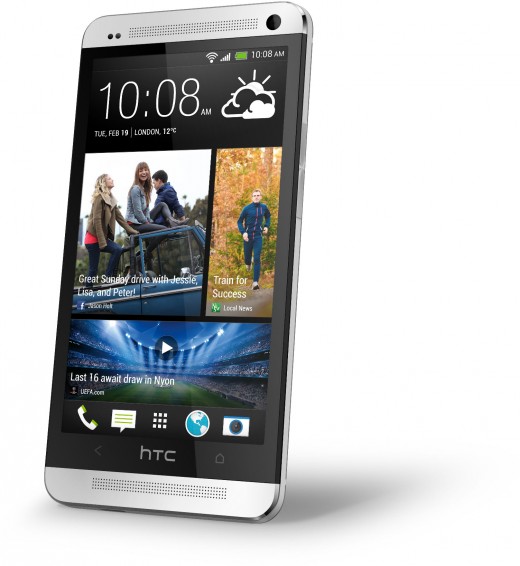
ZOE
Combined, all of these imaging and video features form HTC’s new ZOE camera feature. Positioned as the ultimate convergence of stills and video, ZOE utilises dual-path encoding (using the ISP) to capture full HD video and perfectly clear burst photos at the same time.
As a user, you don’t need to choose whether to shoot photos or videos. You can use one interface, without having to extract stills from video or switch between modes (although you will still be able to).
Recognising that users may react a little later than they should to capture important footage, HTC has incorporated a new buffering feature that will constantly capture and destroy assets before you actually press the shutter button.
For example, you may launch the camera and sit there waiting for friends or family members to do something funny. When they do, you may be too late to hit the capture button and catch the earliest part of the video. HTC’s new system of constantly caching and destroying new footage before you press the capture button could help you grab that all-important smile or jump into the swimming pool.
After you’ve shot your footage, or captured stills, HTC has applied itself to help you make the most of those moments. Doing away with the video editor, HTC created a new ‘zero editing’ project which takes stills and videos and intelligently combines ZOE assets using its imaging processors, and automatically takes cuts from your footage and splices it all into one engaging, flowing and shareable media project that can be uploaded to HTC’s servers to be shared with the world, be it via Facebook or simply by email.
HTC offers six different themes for those videos, adding effects to your ZOE project. If the One hasn’t captured the essence of your footage, you can hit ‘remix’ and have it create new endpoints, and playback your memories via a completely different auto-generated timeline. You can incorporate any other ZOE file, letting the HTC One create the movies with little or no effort on your part.
HTC says that ZOE Share files will be stored in its cloud for 180 days for free, but it is currently working to adapt the service following today’s launch.
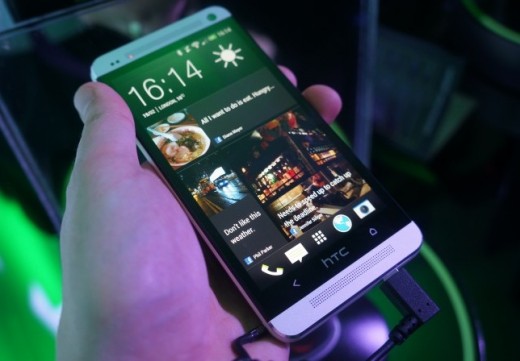
Sound
The HTC One has two front-facing speakers, which the company labels “Boom Sound.” The chamber size has been increased, allowing for louder and crisper playback. In our tests, the sound was crisp, and we daresay it was louder than any other smartphone we have tried. Perfect for those annoying teenagers who blast music at the back of a bus.
Like most other smartphones, the One also has dual microphones. HTC says that it has developed dual membranes, which offer noise cancellation, but capture different dynamic ranges, capturing what it calls ‘HDR sound’.
Developed to make the most of your music, HTC has teamed up with Gracenote to identify your music. Like many of the popular music detecting apps on Google Play or the App Store, HTC’s in-built music player is capable of playing back lyrics, allowing you to sing along to the tracks you are playing back — if you so wish.
As with all HTC smartphones, playback is optimised using Beats audio technology.
Software
Continuing to utilise its custom UI, HTC has updated Sense to version 5.0, overhauling the look, feel and its features to match the simplicity of its new flagship smartphone.
Sense 5.0 does away with the big bold clock you may have come to love, toning down the widgetized elements to incorporate a brand new feature: the BlinkFeed.
BlinkFeed is what you will see first when you first unlock the HTC One. It’s a dynamic homescreen panel that lists content from over 1,500 news sources covering music, news and your Facebook News Feed.
Similar to Flipboard, BlinkFeed displays blocks of content. When you unlock the One, or manually refresh, the service automatically positions and shifts those blocks to display new articles, audio or video. At the moment, feeds will cache headlines and images, but you won’t be able to use it offline.
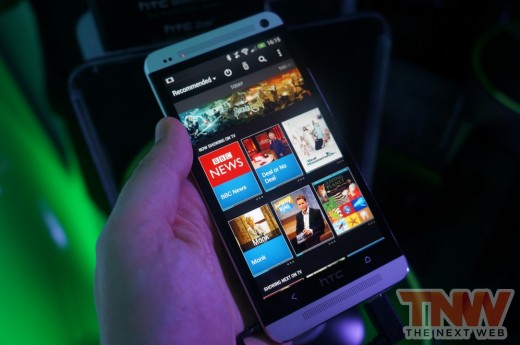
The idea behind BlinkFeed is that you are automatically notified about the things that you care about when you unlock your phone. HTC says it recognised that when people are bored, or needed to kill time, they would mess about with their smartphone by unlocking it, only to lock it again.
Instead of staring at a list of apps, BlinkFeed displays information that is relevant to you. Want to know the latest sports news or which celebrity is in rehab? You can set BlinkFeed to deliver those exact feeds.
Unfortunately for site owners, or those who like more obscure content, HTC’s news feature is curated by the company itself, so you won’t be able to add RSS feeds or directly link your site’s content to the BlinkFeed.
The HTC One only uses two soft buttons — the home and the back button. The menu button is displayed with apps, and when you hit the home button once, it will take you to your app list first. Hit it again to go back to your homescreen.
If you don’t like BlinkFeed, HTC allows you to disable the feature and load Android’s normal homescreens by default. While the company is pushing its own services across the device, it understands that they might not be welcomed by everyone, and so does what it can to provide a choice.
Availability
Launching today, HTC says that it hopes its new flagship will go on sale from March 15th. It has managed to get all of the UK’s major operators on board, so you will be able to buy the HTC One and have it operate on your chosen operator’s LTE networks when they launch them later in the year (unless you choose EE, which has already launched its 4G networks). In the US, we’ve had confirmation from AT&T that it will carry the device in both silver and black, and with a choice of 32GB and 64GB variants.
HTC says that although the HTC One is running Android 4.1.2 now, it will work to update the handset to the latest version of Android. This means that you will probably have to wait until May, when Google is expected to unveil Android 5.0 at its annual Google I/O developer conference.
The ZOE Camera and Share functionality will not be limited to the HTC One either; HTC says that it will work to incorporate the new video and imaging services into its future handsets.
Get the TNW newsletter
Get the most important tech news in your inbox each week.